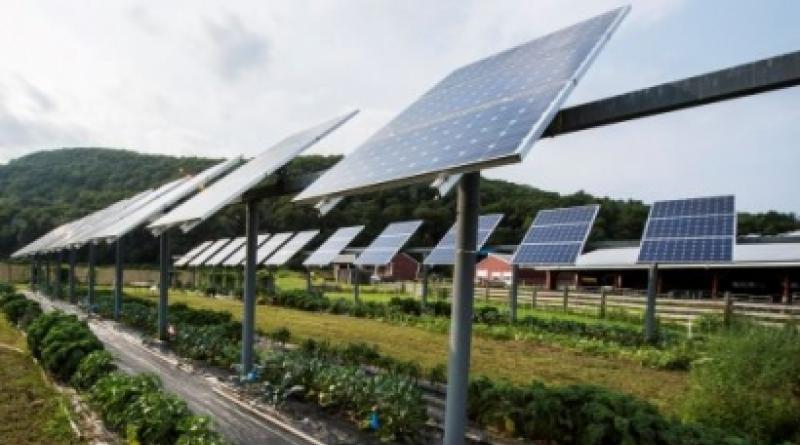Waste in the Renewable Energy Industry and How We Can Sustainably Power Our World.

When it comes to the life cycle of renewable energy, there is an increasing concern for how to handle the disposal of waste. Renewable energy, such as solar, wind and hydroelectric, while cleaner than fossil fuels, still require the use of resources that can pollute the environment and affect human health.
The renewable energy industry is relatively new in its processes, from production to disposal. In recent years, the installation of renewable energy, such as solar panels, has been heavily subsidized. In the United States, commercial and residential properties can receive a tax credit for implementing renewable systems.
Policies such as this have led to the rapid growth of the solar industry. The industry has grown at an annual rate of 50% for the last decade. However, much of the engineering behind solar is spent on the production and installation of photovoltaic panels, not their removal and disposal. Now that more solar panels are reaching the end of their life cycle, scientists and engineers are questioning how to best dispose of these materials.
A sustainable approach to renewable energy waste requires the creation and implementation of a circular economy. With technology such as waste-to-energy plants, it is possible to regenerate energy from renewable energy waste. However, for renewable waste management to work effectively, it will be necessary to advance technology and improve policy that encourages the reuse of these materials.
Renewable Energy Waste
When talking about renewable energy, the topic of waste does not often appear. With the pressures of climate change and the urgency to find alternative energy resources, there may be some hesitation to discuss the possible negative impacts of renewable energy and instead focus on the many benefits.
However, to ensure that renewable energy is utilized in a truly sustainable way, it is essential to find solutions to their disposal.
Solar panels present a particular problem. There is growing evidence that broken panels release toxic pollutants. The International Renewable Energy Agency (IRENA) estimates that solar panels produced 250,000 metric tonnes of waste in 2018 alone.
Additionally, disposing of renewable energy waste is not as simple as it may seem. While renewable energy waste may be composed of less toxic substances than fossil fuel by-products, they are still a hazard to the environment. There is increasing concern regarding what happens with these materials when they are no longer viable, especially since they are difficult to recycle.
Waste-To-Energy Plants
Waste-to-energy plants take the process of waste incineration and use it to generate energy. Waste-to-energy plants also referred to as WTE plants, have the potential to create a cyclical life cycle by converting industrial waste into energy. While most often used to process municipal solid waste, waste-to-energy companies can also transform renewable energy waste into electricity.
While waste-to-energy plants may present a potential solution to renewable energy waste, there is controversy over whether this process can be considered truly sustainable.
When it comes to transforming incinerated waste into energy, it is important to clarify what kind of waste is processed. For example, if the majority of waste is organic, such as food waste and diapers, the WTE plant may produce more carbon dioxide than fossil fuel plants. However, if the incinerator is only processing fossil-fuel derived products, like plastic, they tend to release half the carbon dioxide of a standard coal plant. As a solution to renewable energy waste, WTE plants are a more sustainable option than disposing of waste in a landfill.
Incentivizing Sustainability
Like waste management in general, the difficult part of incentivizing less toxic processes is that disposing of materials can cost more than the value of producing them. As mentioned before, there are not many incentives for the government or industry to prioritize a waste management plan when it comes to renewable energy.
In the United States, there are few requirements for standard disposal processes. Very few solar panel installations take place with a recycling plan in mind. Because of the potential of leached toxins, panels cannot be sent to a landfill, increasing the amount of waste sent to e-waste dumps, with most of the waste shipped to developing countries such as Ghana, Vietnam and Pakistan. If renewable energy waste must be shipped around the world and end up in a landfill, it is hard to describe it as truly sustainable.
Policy plays a major role in the future of renewable energy waste management. Some studies suggest that the most economical solution would be to impose a federal fee that creates a disposal fund. The fund could then be distributed to the state and local level based on their need to recycle or remove renewable waste.
In regards to solar panels, innovation in their construction may also place a role in the type of waste they produce. Advancing technology will be vital to decreasing the impact of renewable energy waste.
For example, new panels use less silicon, and the manufacturing process produces less waste. Innovation within the renewable energy sector will ultimately play the most prominent role in the product's life cycle. Implementing renewable energy is a step toward a more sustainable future, but it will require more consideration in the disposal of its materials to truly become sustainable.
*Title Photo : Courtesy of NREL
5 March 2020
RenewableEnergyMagazine




